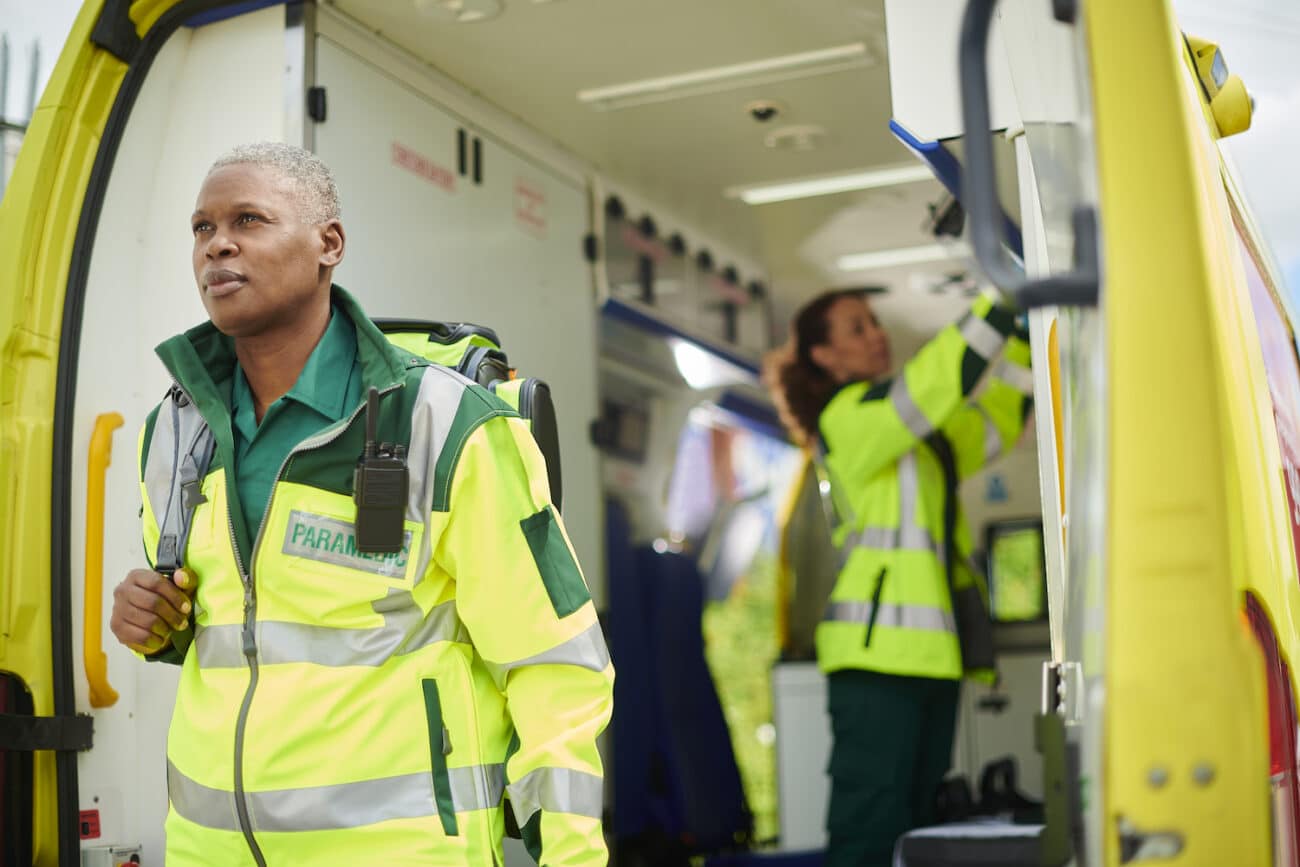Fleet electrification in the healthcare sector: the challenges and opportunities
By Mike Brown, VP of Product
The NHS in England operates the second largest fleet in the country, with over 20,000 vehicles travelling over 460 million miles annually.
According to the online publication Green Fleet, decarbonising England’s ambulance fleet could reduce carbon emissions by 87 ktCO2e every year.
However, while the benefits of vehicle electrification are clear, transitioning emergency vehicle fleets comes with unique challenges.
As such, I want to explore these challenges and opportunities in more detail and outline some potential transition strategies for healthcare and hospital fleets.
The need for fast, accessible charging
Ambulances have irregular schedules. They need to travel at high speeds, power life-saving equipment, and be operationally ready at all times.
Transitioning these vehicles to electricity means accepting a certain amount of downtime as they charge, which can potentially jeopardise operational capacity, and emergency response times.
Likewise, fleet managers need to carefully schedule charging times. To provide some additional context, the average ambulance covers around 40 miles per day, but charging windows may be variable and require High Power charging.
Today, many ultra-fast EV chargers are able to provide up to 350 kWh, and some vehicles can reach 80% charge in as little as 20 minutes.
These ultra-fast systems can be deployed directly at ambulance stations and hospitals to provide critical infrastructure. For example, the South East Coast Ambulance Service NHS Foundation Trust is currently trialling three electric single responder vehicles, supported by heavy-duty chargers across three sites. The chargers are able to fully power the vehicles in just 30 minutes.
Transitioning non-emergency vehicles as a priority
As EV technologies advance, HGV range will continue to increase. In the meantime, the healthcare sector can still benefit from fleet electrification by phasing its implementation.
As a starting point, fleet managers can focus on transitioning non-emergency vehicles, where operating patterns are more predictable, and charging needs can be more easily planned.
For example, there are currently 7 ambulance trusts across the UK trialling 21 zero-emission emergency vehicles, 6 of which are dedicated to helping those with mental health needs. These vehicles will help cut emergency response times, and reduce demand on traditional double-crewed ambulances
Likewise, the London Ambulance Service is investing £31 million to transition its light commercial vehicle (LCV) fleet to electricity and upgrade its charging stations. With the upgrades, it takes just 40 minutes to charge the Mustang Mach-E cars to 80%, enabling them to travel more than 300 miles.
Advancements in EV manufacturing
Heavier vehicles need more power to move, which drains electric batteries quicker and reduces their overall range. However, an increasing number of manufacturers are using lightweight materials to develop electric emergency vehicles.
The West Midlands Ambulance Service is currently trialling its Electric Dual Crewed Ambulance (E-DCA). The lightweight vehicle is manufactured by VCS and is built using a ‘core capture’ composite construction technology.
The role of telematics and smart monitoring
Fleet managers can use telematics and smart monitoring to guide their decision making on which emergency vehicles to transition first.
Telematics data can provide insights into the energy requirements of a fleet and help determine the charging infrastructure required to support it.
With smart monitoring, healthcare and hospital fleets can optimise their charge schedule to ensure vehicles are on the road when they need to be.
Fleet managers can also monitor vehicle state of charge levels (SoC) and range capacity to ensure the correct vehicles are deployed on the correct call-out.
Improving the patient experience
EVs offer enhanced responsiveness and acceleration, which is crucial for emergency vehicles that need to navigate traffic and reach destinations quickly.
EVs also offer an improved driving experience. The smooth and silent drive of an electric vehicle reduces noise pollution and provides a more comfortable ride for patients.
Compared to internal combustion engine (ICE) vehicles, EVs have fewer moving parts, so they require less maintenance. In turn, this can reduce emergency vehicle downtime and improve fleet capacity.
And when EVs do need repairs, the associated costs are generally lower.
Now is the time to embrace the transition
By 2035, the NHS plans to have all its leased and owned vehicles operating with zero emissions, excluding ambulances. And by 2040, its full fleet, including ambulances will be decarbonised. With these target dates fast approaching, now is the time to start prioritising non-emergency vehicle transitions.
As EV technologies improve, ultra-fast chargers and advanced telematics will soon provide a sustainable infrastructure for ambulances to transition to electricity.
And when the time comes, fleet managers will need to be prepared, as manufacturers will likely experience a surge in demand for electric emergency vehicles.
At VEV, we have a comprehensive suite of tools and resources to help healthcare organisations assess their existing fleet, identify suitable electric vehicle models, and establish a sustainable charging infrastructure.
We understand the unique challenges posed by emergency and non-emergency vehicles. As such, we can provide insights into ultra-fast charging technologies and their relevance to different fleet segments.
Get in touch with one of our expert team today and find out more about VEV’s commitment to fleet electrification across the healthcare sector.
